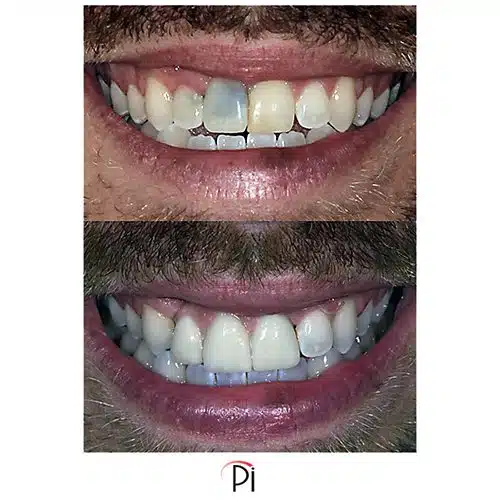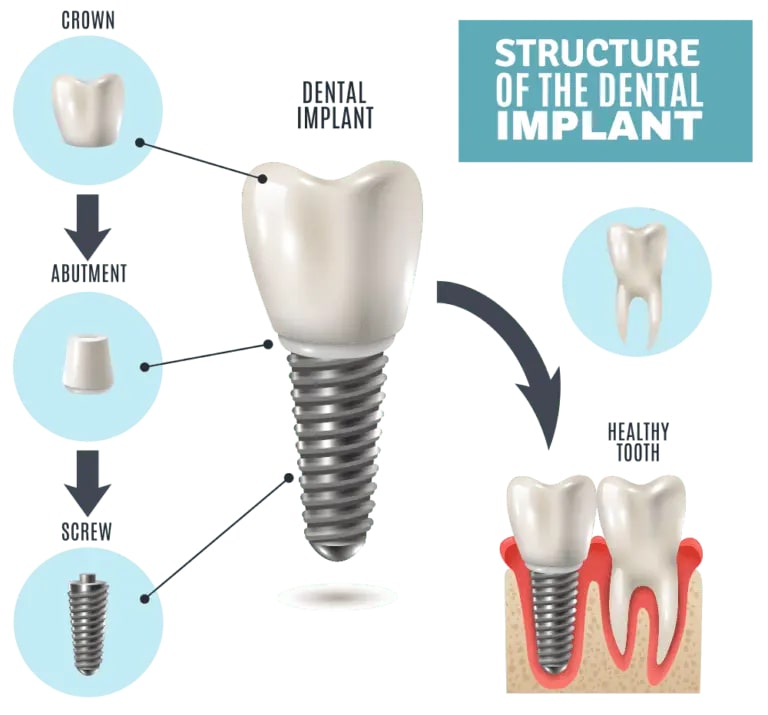Accomplish a Long Lasting Smile: Dental Implants Kent Solutions
Accomplish a Long Lasting Smile: Dental Implants Kent Solutions
Blog Article
Experience the most up to date Technologies in Oral Implants Technology
As the field of dentistry remains to develop, the improvements in dental implant innovation have actually been nothing except remarkable. From using sophisticated materials that enhance durability to the implementation of digital imaging for precise positioning, these developments are changing the landscape of dental treatment. With minimally invasive medical methods and the modification capacities of 3D printing, people now have accessibility to customized solutions that were as soon as unimaginable. In addition, the integration of technology is changing the capability of dental implants, assuring boosted results and client contentment.
Advanced Products for Enhanced Longevity
In the world of dental implants technology, the integration of innovative materials has actually dramatically added to enhancing toughness and durability of these crucial oral prosthetics. The use of materials such as titanium alloys, zirconia, and ceramic compounds has actually reinvented the area by providing boosted strength, biocompatibility, and resistance to corrosion.
Titanium alloys are extensively used in oral implants because of their phenomenal strength-to-weight ratio, deterioration resistance, and compatibility with the body. These alloys ensure the stability and durability of the implant by enduring the pressures applied throughout chewing and talking, supplying a trusted service for patients looking for sturdy tooth replacements.
Zirconia, a kind of ceramic product, has obtained appeal for its biocompatibility and natural tooth-like appearance. Its high strength and resistance to use make it an ideal selection for dental crowns and bridges, boosting the overall aesthetic appeals and performance of the implant.

Digital Imaging for Specific Positioning
The evolution of oral implants technology has further progressed with the integration of electronic imaging strategies, making certain exact placement of these prosthetics for optimum functional and visual outcomes. Digital imaging plays an essential role in the planning and positioning of oral implants by giving thorough 3D pictures of the client's jawbone framework. This technology enables dentists to analyze bone thickness, find crucial structures, and intend the specific setting and angle for implant positioning with unrivaled accuracy.
By utilizing digital imaging, dental practitioners can produce virtual medical guides that act as a roadmap during the dental implant placement treatment. These overviews are customized for each and every patient, thinking about their one-of-a-kind makeup and the desired outcome. This degree of accuracy not just enhances the success rate of dental implant procedures but also lowers the threat of issues.
Furthermore, digital imaging makes it possible for dental practitioners to picture the final prosthetic reconstruction before the actual placement of implants, enabling meticulous planning and making sure that the result fulfills the patient's aesthetic expectations. In general, the integration of electronic imaging technology has changed the area of oral implants, offering patients a more foreseeable, efficient, and patient-specific therapy technique.

Minimally Intrusive Surgical Strategies


Developments in medical techniques have actually led to the growth of minimally intrusive strategies in the field of dental implantology. These techniques intend to reduce trauma to the individual, shorten healing times, and enhance overall treatment outcomes. Minimally invasive procedures include smaller cuts, specialized instruments, and progressed imaging modern technologies to specifically put dental implants with marginal disruption to bordering tissues.
One secret facet of minimally invasive strategies is the use of led surgery, where 3D imaging and computer-aided design software are used to plan the implant positioning with wonderful precision. This permits an extra predictable end result and can usually get rid of the demand for comprehensive flap surgical treatment.
Additionally, improvements in products and implant layout have actually additionally contributed to the success of minimally intrusive methods. Implants with improved surface area homes promote quicker osseointegration, reducing the recovery time needed prior to the prosthetic repair can check my site be put.
3D Printing for Personalized Solutions
Using 3D printing technology in dental implantology enables for the development of highly tailored options customized to specific person needs and anatomical variations. This advanced modern technology enables oral experts to develop and make oral implants with exceptional accuracy and precision. By using digital imaging strategies, such as cone light beam calculated tomography click to find out more (CBCT), thorough 3D designs of the person's mouth can be generated to assist the dental implant planning process.
One of the key benefits of 3D printing in oral implantology is the capacity to develop patient-specific implants that completely fit the distinct anatomy of each person. This customized approach aids improve the total success and longevity of the dental implant by making certain ideal fit and alignment. Additionally, 3D printing permits the manufacturing of complicated geometries and elaborate structures that would certainly be tough or difficult to achieve using typical manufacturing approaches.
Furthermore, 3D printing modern technology enables dental professionals to streamline the implantation process, reducing surgical procedure time and improving overall patient experience. With its capability to develop personalized remedies swiftly and successfully, 3D printing is transforming the field of oral implantology, offering clients innovative treatment options and boosted end results.
Integrated Technology for Improved Performance
Carrying out sophisticated technology in dental implantology improves functionality and precision, raising the criterion of treatment for individuals going through implant procedures. Integrated innovation plays an essential function in boosting the total success and durability of dental implants.
Moreover, the combination of computer-aided style and computer-aided production (CAD/CAM) innovation allows the production of personalized implant restorations with exceptional accuracy. CAD/CAM systems utilize electronic impressions to develop prosthetics that perfectly fit the person's one-of-a-kind composition, guaranteeing optimal convenience and performance. Additionally, making use of robotic-assisted surgical procedure in implant positioning improves precision and lessens the risk of human error.
Final Thought
In verdict, the current innovations in dental implants modern technology offer boosted longevity through advanced products, specific placement with digital imaging, minimally intrusive medical methods, tailored options with 3D printing, and improved capability with incorporated modern technology - Dental implants Kent. These innovations in oral implants modern technology are revolutionizing the field and providing clients with more efficient and reliable treatment alternatives for restoring their smiles and oral health and wellness
The combination of technology is reinventing the capability of dental implants, promising improved outcomes and client fulfillment.
The evolution of oral implants innovation has even more advanced with the assimilation of digital imaging other techniques, making certain accurate placement of these prosthetics for optimal practical and visual results. Minimally intrusive surgical treatments entail smaller cuts, specialized instruments, and advanced imaging modern technologies to exactly position dental implants with very little interruption to bordering tissues.
Implementing sophisticated innovation in oral implantology boosts capability and accuracy, raising the requirement of treatment for individuals undertaking dental implant procedures. Dental implants Kent. Integrated innovation plays an essential role in boosting the overall success and durability of oral implants
Report this page